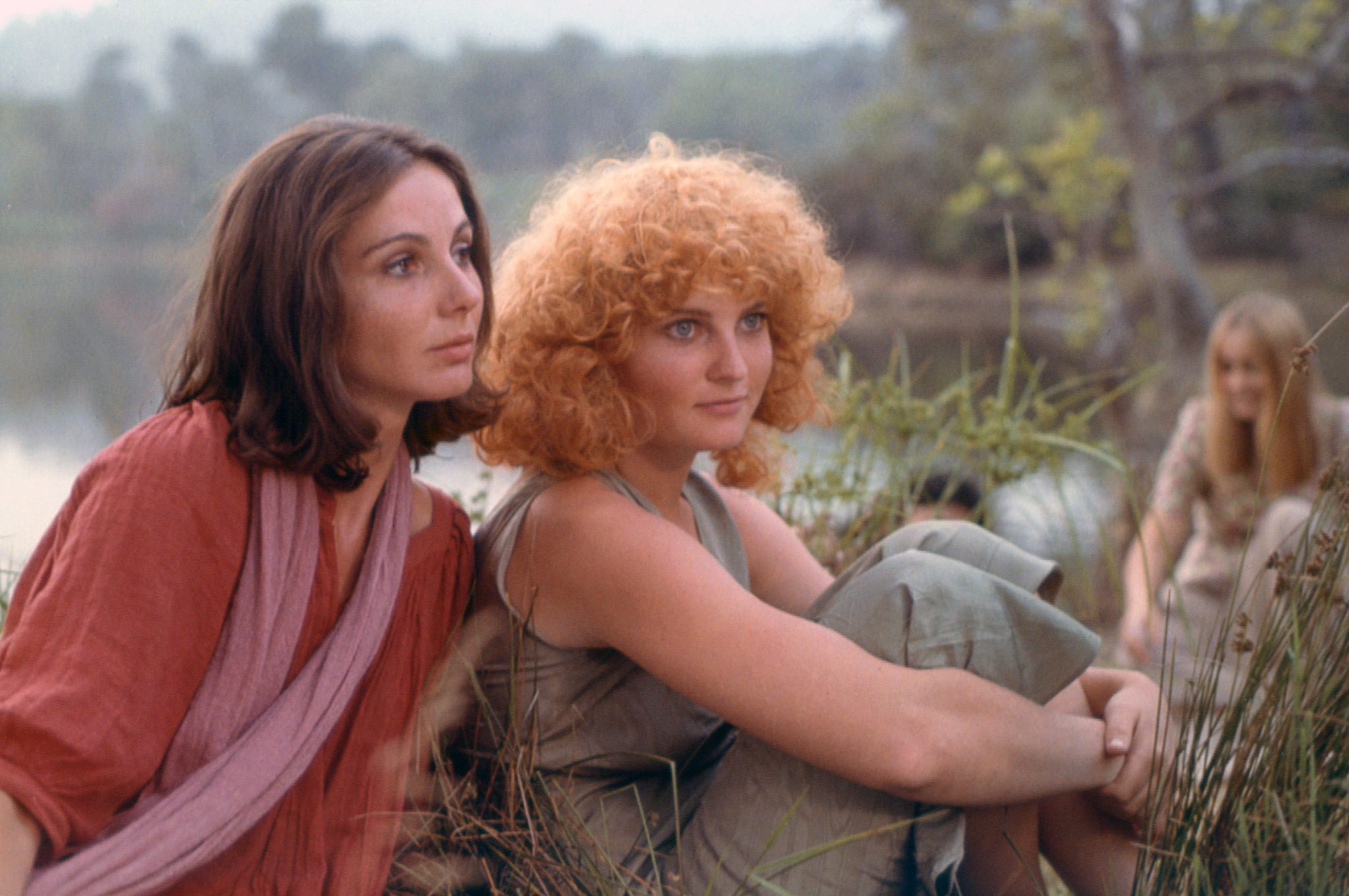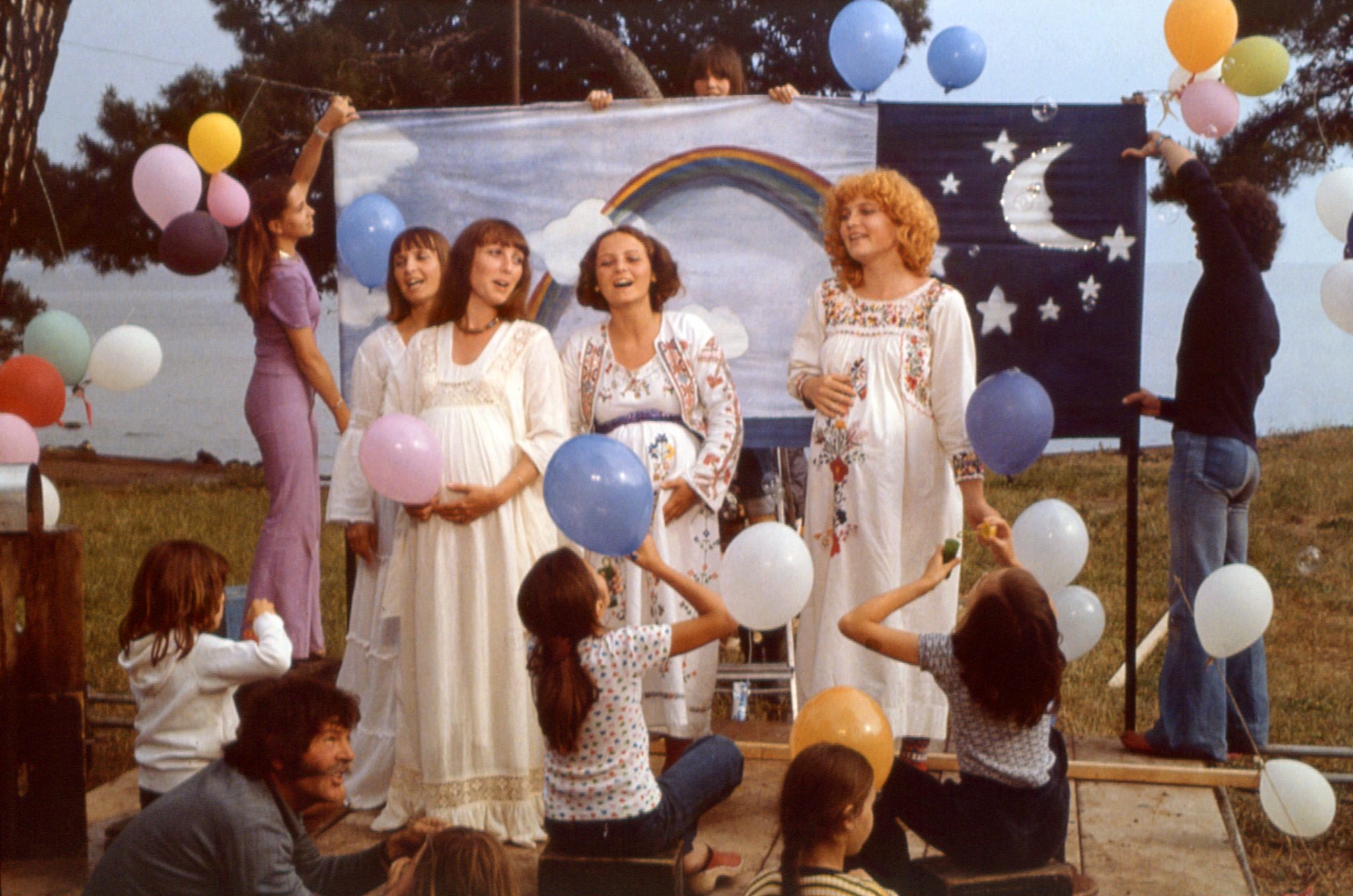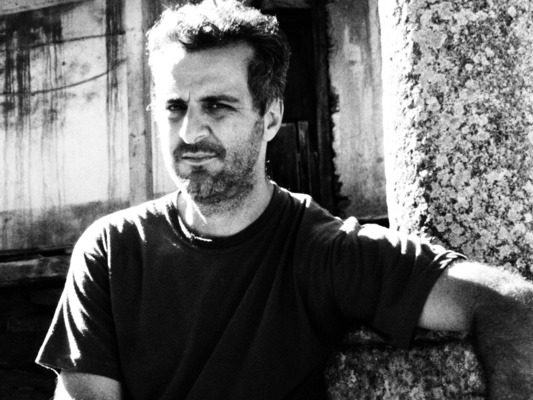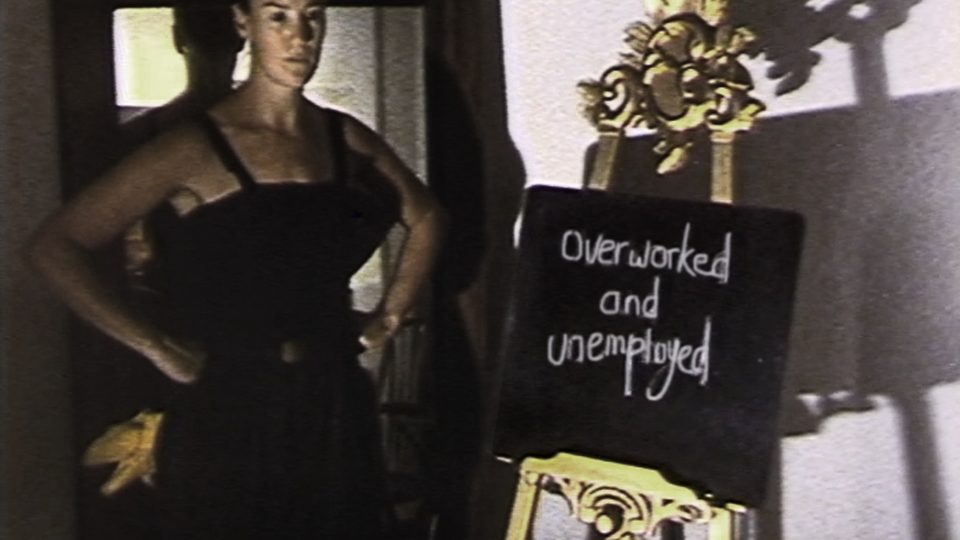
For a manifesto film, and Agnès Varda’s One Sings, the Other Doesn’t (L’une chante, l’autre pas, 1977), certainly is one, it is also strikingly nuanced. That it’s a manifesto was never a secret—Vincent Canby noted as much in The New York Times, when the film premiered in the US, at the New York Film Festival. Although it must be said that Canby thought the film schematic, too upbeat, and “Soviet neo-realist,” and so, needles to say, missed its charm.
In the film, high-school senior Pomme, or Apple, as Pauline (Valerie Mairesse) is affectionately called, seeks out a bit older married woman, Suzanne (Therese Liotard), at a crucial time in their lives. Apple’s conservative parents—a stern authoritative father and a demurring mother—treat her desire to sing as a whimsy of a feverish young mind, to pass quickly, when treated with the right amount of preaching and scorn.
The desire to strike out on one’s own is quickly introduced: At a choir rehearsal, as Apple leans in and whispers to a female friend, “I wish this counted as credit,” the friend responds “I wish it meant money.” There is a strong economic bend from the start, indicating that the dreams of self-determination mean little if they are not wed to survival. The film partly revolves around this real concern over material means.
In the opening sequence, Apple spots Suzanne’s portrait in a photography-studio’s window display. She recognizes Suzanne as her ex-neighbor, comes in, and meets Jerome (Robert Dadies). Not knowing that Jerome is Suzanne’s longtime lover, she comments that all the women he photographs seem battered and unhappy. Jerome is quick to deny this—the women are not sad or victims, but merely real women he knows from the neighborhood.
It’s a telling exchange. Apple is young and judgmental, yet her insight proves uncanny. Jerome denies the unhappiness or victimization he reproduces—and partly incarnates as a wannabe auteur—yet he slowly comes around to Apple’s view. This is suggested by the film’s narrative arc, from the scene in the studio, to Jerome’s attempt to take Apple’s portrait, and his growing belligerence over her defensiveness. Jerome’s actions convey his demand that a woman be on one hand transparent and instantly available, and on the other, possess that quintessential mystique that makes her a muse.
Jerome’s belief that he photographs women as they truly are proves an illusion. In the end, when Apple comes to meet Suzanne, in her modest apartment that she shares with her small daughter and baby boy, she finds that Suzanne is every inch as desperate and exhausted as she appears in the portrait. Jerome’s art brings them no money, and Suzanne cannot work while the children are small. Worse still, Suzanne is pregnant.
Suzanne’s abortion is the film’s focal point. Apple arranges the procedure. Tellingly, she turns first to her high-school philosophy teacher—an appeal justified by the fact that the teacher is female, and by Apple’s earnest trust that philosophy is belief in action, in other words, political, à la Sartre. She comes away disappointed, as the teacher refuses to help. Instead, Suzanne confines in a colleague from the choir, who gives her a contact. Apple then lies to her parents to get the money for Suzanne, and packs her suitcase, saying she’ll travel with the choir, to watch Suzanne’s kids during her absence.
Varda has a quick, assured touch for historical background. A few sparse details establish abortion as a black market. There’s a woman who “inserts a probe,” and then “it’s your decision;” there are the more expensive clinics in Switzerland. The whole thing is predicated on the control over women’s bodies. Pointedly, later when Apple also has an abortion, the information is delivered in a flashback, in a lighter key (though Apple speaks sentimentally of the other women at the clinic, the outcome is overwhelmingly positive—by chance, she meets her paramour at the clinic’s canteen).
Where Suzanne is despairing and prone to paralysis, Apple is decisive and stubborn. Confronted by her father’s anger, and her mother’s bad conscience, both revolted with her Samaritan deed that to them equals disgrace, Apple moves out. She also quits school. Her initial (rather hapless) ventures into singing are clearly marked by the male singers’ egos, extinguishing her desire to make it in the biz.
 In fact, Apple is not a tremendous singer. This is Varda’s singular stroke of genius, for the point is really not the extent of Apple’s talent, or if she has one, but rather that her passion for singing shapes her life. The key determinant in all of her decisions, it liberates her. She will ultimately lead a life that’s itinerary, participatory, political and communal.
In fact, Apple is not a tremendous singer. This is Varda’s singular stroke of genius, for the point is really not the extent of Apple’s talent, or if she has one, but rather that her passion for singing shapes her life. The key determinant in all of her decisions, it liberates her. She will ultimately lead a life that’s itinerary, participatory, political and communal.
But first, there’s the parting of the two friends. After Jerome’s suicide, Suzanne must find the necessary strength to move on. From now on the two women will communicate through letters. Suzanne returns to her parents’ farm. Here Varda gives us a glimpse of France’s suffocating conservatism, when it comes to rural attitudes, when Suzanne’s own mother calls her children, “your bastards,” since Suzanne and Jerome never married.
The friends will reunite eventually. First briefly, when Suzanne has already undergone an important transformation in her life, by starting a parenting program, with seminars about pregnancy prevention and about the pill for young and rural women, and by refusing advances of a married man, choosing solitude over casual relationships that cause her heartbreak.
Apple, for her part, is at first glance an emblem of sexual liberation. A street singer, a performer cum choreographer cum manager, she juggles multiple roles with characteristic determination. She finds true love with an Iranian economist (somewhat amused to allow herself this one concession to her fiercely anti-capitalist stance). Admittedly, this part with a happy couple that finds its palace is built on quicksand comes off as rashly sketched: When Apple is frustrated with the bureaucracy that prevents her troupe from thriving, her hubby offers to take her to Iran. Apple at first relishes the new sights and flavors, but fails to find her footing (we never fully understand why, somewhat stumped by Varda’s cultural shorthand, which falls back on clichés). To regain her confidence, Apple returns to songwriting. Yet now her seemingly liberal partner is less understanding: “I know I didn’t marry a cook,” he tells her one night, “but you could have made something.”
 And so Apple must depart. She is pregnant, and ends up traveling with her troupe, composing songs like “watermelon belly,” joyfully displaying her baby bump. A matured flower child, she finds more reassurance amongst her companions than in a marriage. It’s in this part that Varda’s writing is most radical: Apple’s husband arrives in France for the baby’s birth, and declares that he must take the boy with him, to Iran. Apple still loves her flame, but that period of her life—of denial—is done. She will let him keep the baby, she declares, if he waits long enough in Paris to give her another one. By the time the father and baby leave, Apple is pregnant again. Thus, one of the final images in the film is a reunion of Suzanne and Apple, the latter already with her French-born daughter, who’s being brought up by the troupe, and Suzanne with the family man she had fallen for earlier, and who had since gotten a divorce to wed her instead.
And so Apple must depart. She is pregnant, and ends up traveling with her troupe, composing songs like “watermelon belly,” joyfully displaying her baby bump. A matured flower child, she finds more reassurance amongst her companions than in a marriage. It’s in this part that Varda’s writing is most radical: Apple’s husband arrives in France for the baby’s birth, and declares that he must take the boy with him, to Iran. Apple still loves her flame, but that period of her life—of denial—is done. She will let him keep the baby, she declares, if he waits long enough in Paris to give her another one. By the time the father and baby leave, Apple is pregnant again. Thus, one of the final images in the film is a reunion of Suzanne and Apple, the latter already with her French-born daughter, who’s being brought up by the troupe, and Suzanne with the family man she had fallen for earlier, and who had since gotten a divorce to wed her instead.
There is no decisive, empowering climax (“empowerment” being that dubious term lobbied at films which are said to indulge in self-help, but more often simply fall short on its artistic promise). Instead, a series of small acts, slowly accruing self-revelations, culminate in fulfillment. A modest triumph, yet in the sociopolitical context—attested to by numerous images of elderly women, with stubby legs and tired, vacant eyes, which mingle with the fresher portraits of Suzanne, Apple and gang—we can deduce that many women don’t make it. They lack the means, financial or other, lack the resilience to thrive against all odds.
Apple, by contrast, trusts her instincts, almost to a fault. Her stubborn belief, for example, that some day she will reunite with her Iranian hubby and baby does little to assuage our doubts as to this projection’s accuracy. The narration strongly suggests that Apple prefers to keep her head in the clouds; it’s how she keeps herself going. Varda employs just enough voiceover to lend the film a critical distance, without straining its intimacy. The abandonment of husband and baby is real; it is a choice some women make (perhaps it’s this matter-of-factness that made Canby see the film as too perky). In their own small ways, these two women are like the intrepid Varda herself, or better still, like feminist writer Doris Lessing, with the exception that their choices aren’t being justified, to themselves or in the public eye, by their rise to greatness.
Perhaps as a result, most critics have denied One Sings, the Other Doesn’t a firm place in the Varda cannon. Roger Ebert wrote about it kindly, but objected to there being too many songs. Calling the film “a musical” has detracted somewhat from its open form, and from the fact that Apple could have chosen any other art. She is also a songwriter, not a great one, but then again, cinema is full of down-and-out middling artists, whom we love for their greatness of spirit (in Jim Jarmusch’s lauded Paterson, to give but one recent example, Adam Driver plays a so-so amateur poet). Art offers the means to break out of a social straightjacket, and in One Sings, the Other Doesn’t, into what Apple repeatedly calls in her songs, “I am myself. Je suis moi.”
The negative take on the film, as slight, or not rigorous, has clouded its reception. There have been, of course, early champions. Molly Haskell, writing for The New Yorker in 1977, called One Sings, the Other Doesn’t a powerful sorority film, and has praised it as one of Varda’s most enduring works. Still, it is hard to deny that the film has remained relatively obscure. We may wonder if this is not partly because, in his NYFF take, Canby labeled it a “women’s picture,” “a film for and about women,” as if women (actors, directors, viewers) were a curious sub-species, or as if male viewers lacked the patience, and the humility, to meaningfully engage with women’s imagination, and work. That Canby read the film as Varda making propaganda for herself (for her own self-reliance), suggesting that the fuss over women’s inclusion in the film industry might finally be getting passé, rings sadly anachronistic today, given the recent women-led protests in Cannes against persistent discrimination. Canby objected to the male roles seeming superfluous. Today, we may ask instead why no one had thought of making this objection to films that featured only powerful men.
One Signs, the Other Doesn’t is playing, in a restored 2K version, at BAMcinématek, June 1 – June 7.

